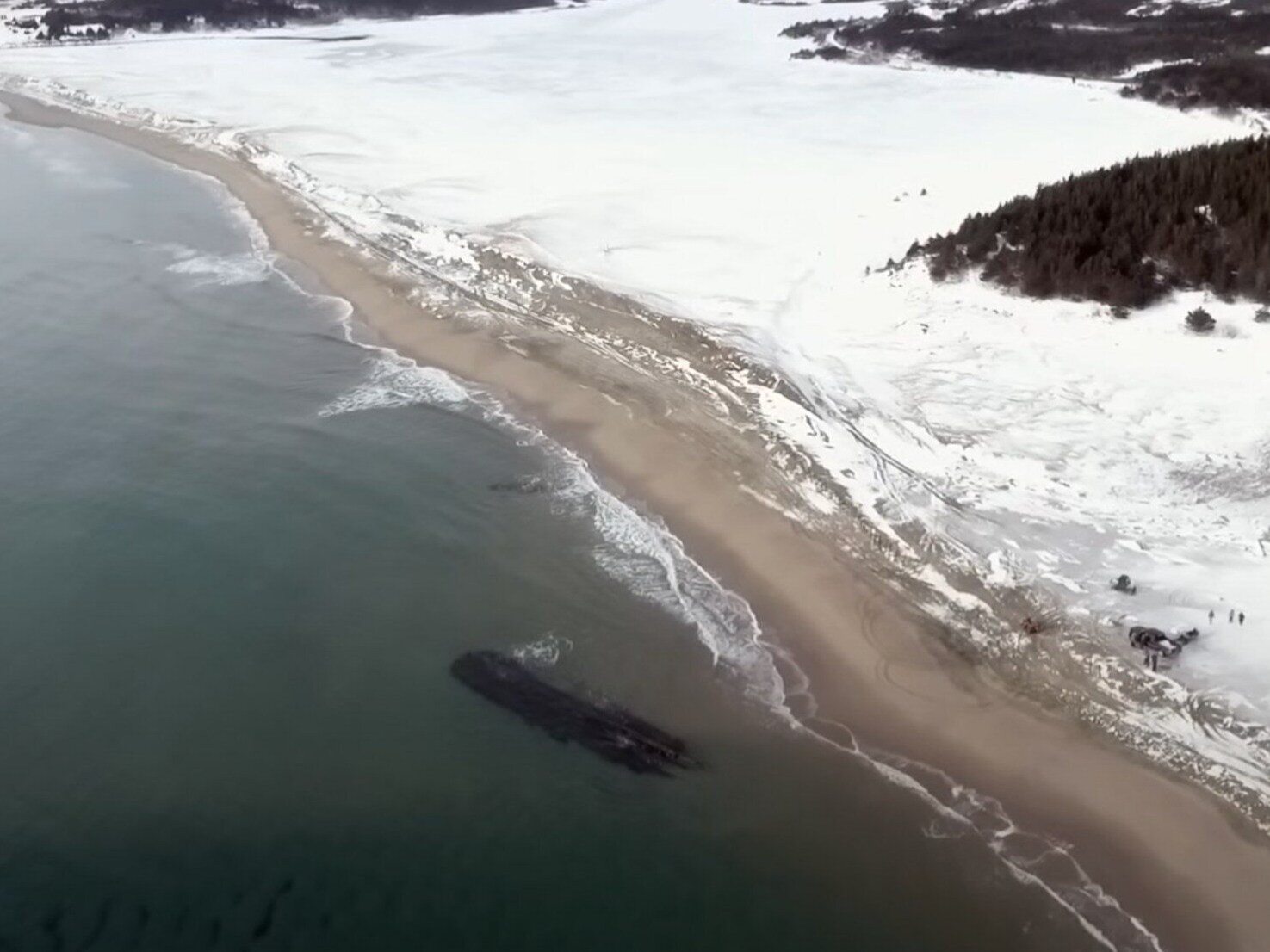The storm revealed a unique treasure. The residents couldn’t believe the sight

An extraordinary discovery was made in Newfoundland, Canada. The last storm revealed a unique object in the local waters. You must see this.
A few days ago, one of the inhabitants of Newfoundland made a unique discovery. He was on the beach and noticed a mysterious oblong dark object in the water. It turns out to be a shipwreck, which was probably discovered by a storm that had raged here earlier.
The storm discovered the shipwreck
The massive wreckage appeared without warning near the southwestern tip of Newfoundland and stunned locals.
Wanda Blackmore claims her 21-year-old son Gordon came screaming into her home on the morning of January 20 after he noticed a long shadow under the water just off the beach near Cape Ray, Newfoundland. As soon as the tide was out, she put on her jacket and headed out to see it herself.
“It’s amazing, there’s no other word for it,” Blackmore said in an interview. “I’m just curious if we can name this ship, how old it is, and someone went missing with it.”
A unique treasure right on the beach
Gordon’s mother revealed that he discovered the wreck in the early morning hours when he was looking for seabirds. He had been to the same place a few days earlier and the ship wasn’t there.
However, over the past few years, the beaches in this corner of Newfoundland have suffered significant erosion. When Post-Tropical Storm Fiona barreled through the area on September 24, 2022, destroying approximately 100 homes and shorelines, it stirred up sand along Cape Ray Beach, said Neil Burgess, president of the Newfoundland and Labrador Shipwreck Protection Society.
Burgess added that if the ship had been buried in sand, Fiona could have pushed it to the surface, and any subsequent storm would have added to that. There were big waves in this area last week, and the wreck may have finally been excavated enough for someone birding to discover it.
Burgess said he believed the ship was built in the 19th century. Wooden dowels were used as nails on wooden ships of the era. There are also copper pins in the wreckage, each over two centimeters wide, that were used to hold the hull planks together, which Burgess said are quite large.
The resulting hull is approximately 24 meters long and not complete, meaning the ship itself was even longer.
“It was quite a large sailing ship, probably bigger than a schooner,” Burgess said, adding that if the hull is made of oak, it was not built in North America.






